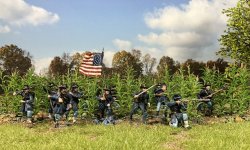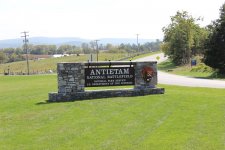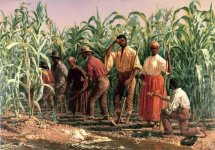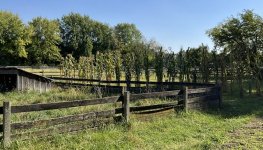WBritain
Master Sergeant
- Joined
- Oct 20, 2005
- Messages
- 1,251
I just set this up a couple of days ago using a number of our Iron Brigade figures in a quick scene made with our fall backdrop, a couple of “Scenics to Go’ bases, and our new summer 18th/19th century corn. I have been wanting to upgrade what we did in in metal for some years now and this new set incorporates injection molded plastic corn stalks that we designed new steel tooling for. The stalks are flexible so they will not damage your figures when making scenes where they are closely staged. The green sets are currently in stock and will be followed next month by the fall sets. I also used one of our new 11” tall maple trees in this set up to add a vertical element, which ties things together better. In the next issue of our magazine “The Standard” will have an article on how to use these maple trees and our old growth oak trees with other scenic items we offer to build a terrific shelf display.





